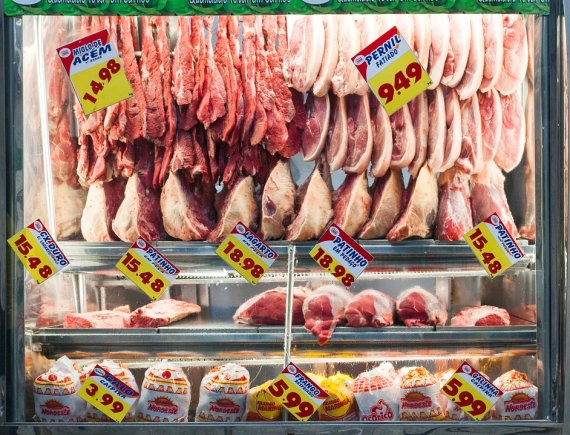<photo: Pixabay>
Tsion, a business economist from Ethiopia, studied the transmission and management of price volatility in the food supply chain. She specifically examined the transmission of price volatility in the German supply chain of pork meat. She also interviewed stakeholders in the German pork supply chain. Her research revealed that retailers use their market power to negotiate lower meat prices from the slaughterhouses and farmers, but that they do not fully translate lower pork prices to the consumers. As a result, their margins grow. The more volatile a food supply chain is, the more money retailers can cream off, she concludes.
Pork cycle
The well-known pork cycle, in which pig farmers alternate good years with low supply and good prices with bad years with plenty of meat and low prices, doesn’t exist anymore. ‘The market has changed entirely’, says Miranda Meuwissen, co-promotor of Tsion. ‘A low supply of pork no longer leads to higher pork prices on the Dutch market. Instead, low supply leads to increased import and low prices.’ Due to globalisation, retailers and processors can compensate low supply with imports. As a result, they do not have to compensate higher feed or environmental costs of the Dutch farmers either.
Control
Food suppliers have four ways to deal with price volatility, says Tsion. The most common is survival; farmers try to minimise their expenses and losses and eat into their livestock or capital. The second option is flexibility; you decide on a daily basis whether you buy or sell, look for opportunities and go with the market. The third one is hedging; you invest in future prices to reduce the risk of price movements. And the fourth and last one is control; you make a contract with processors or retailers with fixed prices.
A contract provides the best price security, says Tsion, but it can also turn out to be false security. ‘If you fix the meat price, but your variable input prices strongly increase, you can still lose your margins.’ Also insurances may not help, Meuwissen adds. ‘In the USA, many farmers buy a revenue insurance, in which both the yield and price are insured. One would expect that this combination product is not expensive. If yield is low, prices are high, and vice versa. But this price mechanism of supply and demand is not working anymore.’
As a result, the revenue insurance is quite expensive. Tsion showed this by calculating premium rates of a revenue insurance contract for the Dutch potato sector. The calculated premium rates were much higher than one would expect if yields and prices were perfectly negatively correlated.
Market power
What should farmers do under these market conditions? The best strategy is to deliver quality products to niche markets, says Tsion. What also helps is that farmers cooperate to gain market power. Tsion compared Spanish and Dutch tomato farmers and concludes that the Dutch farmers have more market power than the Spanish ones. One reason is their better control over yield and quality in the Dutch greenhouses, but the fact that they are united is also of great influence. In their market cooperative, they can directly negotiate with traders and retailers about volumes, quality and prices.
But in that case, the tomato farmers also have to deliver added value to the market, says Meuwissen, which is very difficult on the anonymous commodity markets. Export farmers probably need another strategy, says Tsion. ‘Be flexible and go with the market.’
Tsion Taye Assefa will receive her doctorate on 21 December. Her promotor is Alfons Oude Lansink, professor of Business Economics.

